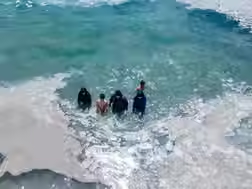
Mucilage (Sea Snot)
Marine mucilage is a thick, slime-like substance made up of algae, plankton, and waste materials. It forms when seawater becomes too warm, polluted, and stagnant—especially during long, windless periods.
Mucilage spreads quickly across the sea’s surface and sinks to the seafloor, cutting off oxygen, blocking sunlight, and choking marine life. It clings to everything it touches—from fish eggs to corals—and disrupts entire ecosystems.
Fish, mussels, and other bottom-dwelling organisms suffocate beneath it. Even jellyfish thrive in it, growing in number while other species vanish.
Types of Mucilage
Though mucilage forms naturally from phytoplankton, pollution and climate change are making it far worse. Waste from cities and industries feeds the algae. Rising temperatures accelerate the bloom. And without strong currents to carry it away, the Marmara Sea becomes a still, suffocating trap.
What looks like harmless slime is actually a sign of crisis.
It’s a symptom of a sea that’s out of balance—and a warning we can’t ignore.
Visual and scientific references adapted from research published by various marine science platforms.
Some images may be subject to copyright and are used for educational and non-commercial purposes only.
%20(1).png)







